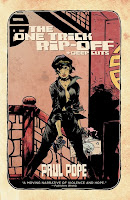 Creator: Yaya Sakuragi
Creator: Yaya Sakuragi
U.S. publisher: Viz Media
ISBN: 9781421549583
Released: November 2012
Original release: 2009
Bond of Dreams, Bond of Love, Volume 2 by mangaka Yaya Sakuragi was first released in Japan in 2009. The English-language edition of the volume was published in 2012 by Viz Media’s boys’ love imprint Sublime. I consider my self a fan of Sakuragi’s work and so am very happy that Bond of Dreams, Bond of Love is being released in English. It’s her second series to be licensed, following the tangentially related Tea for Two. Sakuragi also previously had two one-shot boys’ love titles published in English: Hey, Sensei? and Stay Close to Me. Although Bond of Dreams, Bond of Love isn’t my favorite manga by Sakuragi, I still quite enjoyed the goofiness of the first volume and its characters. I was looking forward to reading the second volume, and not just because I’ve already read everything else available by Sakuragi in English.
While at first Ao wasn’t sure, after somehow convincing Ryomei to submit to a kiss he is now certain: he is in love with the older man. Ryomei on the other hand, while being rather fond of Ao, isn’t quite ready to accept those affections. Unfortunately, turning Ao down without crushing his feelings turns out to be a difficult task and Ryomei is a little harsher than he really intended to be. Heartbroken after being rejected, Ao comes to realize how much he really does care about Ryomei. Shunpei, who feels he’s partly to blame for the situation, is concerned for his best friend. He, like Ryomei, didn’t understand just how serious Ao was about the neighborhood Shinto priest. And to make matters worse, Ao’s brother Aka, who he doesn’t seem to get along with well at all, is in town with some potentially troubling news.
Sakuragi admitted in the first volume of Bond of Dreams, Bond of Love that the series reflected some of her personal preferences when it comes to boys’ love manga, specifically a couple with a significant age difference and traditional Japanese attire. Bond of Dreams, Bond of Love, while remaining its own series, incorporates many elements found in Sakuragi’s other works: a younger man aggressively pursuing an older, more reserved partner (Hey, Sensei?), karate and traditional Japanese culture, not to mention Shunpei (Tea for Two), cakes and pastries and a slightly airheaded lead (Stay Close to Me), and so on. But even though Bond of Dreams, Bond of Love shares these and other characteristics, the way that Sakuragi has pulled them all together in the series doesn’t really feel repetitive even if it does seem as though she’s thrown in anything and everything she personally likes. And I’m perfectly okay with that.
So far, Bond of Dreams, Bond of Love is a rather silly manga and won’t be to everyone’s taste. For me, that is part of the series’ odd charm. I don’t think I would like Bond of Dreams, Bond of Love nearly as well if Sakuragi had taken a more serious and realistic approach with the story. Most of the humor comes from the characters’ personalities. I was unsure of Ao at first—he’s very different from most of Sakuragi’s characters—but he’s really grown on me. He is delightfully crass and blunt, readily speaking his mind and completely oblivious to the discomfort and social awkwardness this causes others. He doesn’t embarrass easily (if at all) unlike Ryomei who is constantly being caught off-guard and greatly flustered by Ao. At this point in Bond of Dreams, Bond of Love it is clear that Ryomei cares deeply for the younger man, but this has yet to develop into a romantic love. I’m very curious to see how their relationship will progress.






